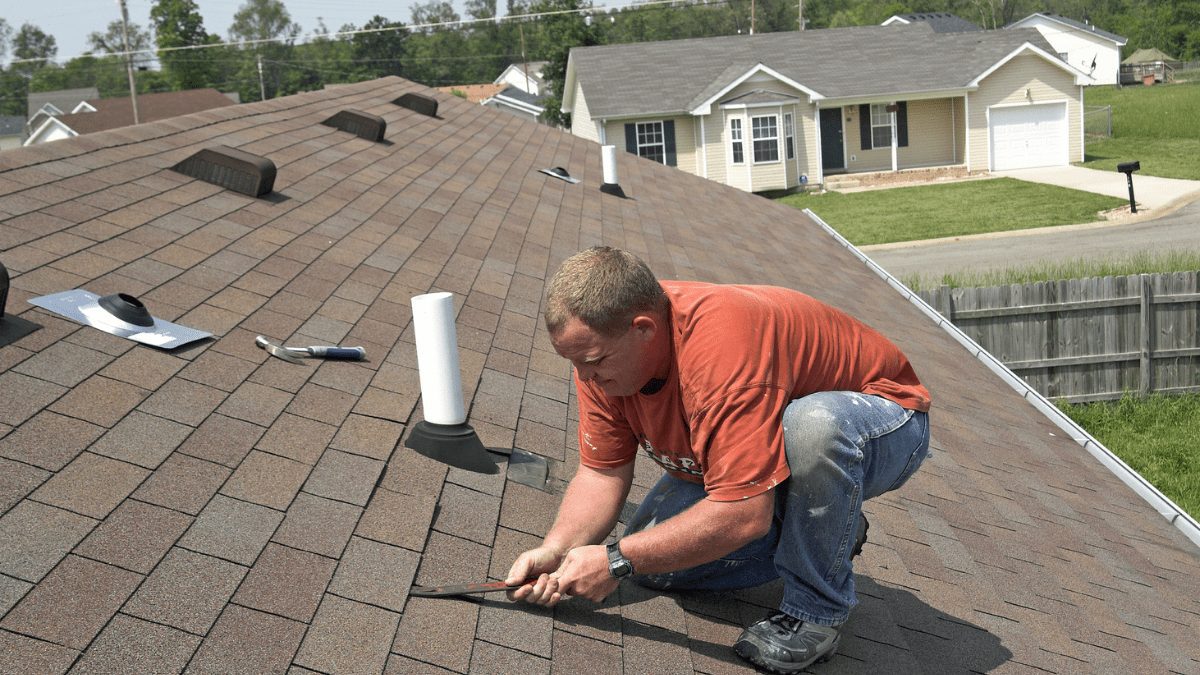One of the best investments you can make is to invest in your roof. It’s what protects you from the elements and makes your home feel like a home.
From rubber to metal and everything in between, there are so many shingle options for your roof.
But, as time and time again has shown, homeowners still prefer the asphalt shingle. It’s no surprise that 3 tab shingles made from asphalt cover more than 75% of U.S. homes.
What is the Difference Between Architectural Shingles and 3 Tab Shingles?
Architectural Shingles
Architectural shingles are a type of roof shingle that has a sleek and dimensional look. This is because of the extra layer of asphalt that has been laminated onto the lower half. The layers are bonded with sealant, which improves their waterproof capabilities.
Architectural style shingles provide a three-dimensional look and imitate the appearance of natural wood or slate shingles.
Depending on the manufacturer and the style of architectural shingles, you’ll usually require around three to four bundles to fit an area of 100 sq. ft.
3 Tab Shingles
3 tab shingles feature tabs that are cut along the lower edge, so each roofing shingle looks like three unique pieces when installed. 3 tab shingles are the most popular roofing option for homes, and they are very affordable.
Yet, they still provide you with a great-looking roof that will last for decades to come.
While an entry-level 3 tab shingle is affordable, it may not be the best choice if you live in a high-wind area. 3 tab roof shingles can only withstand up to 70mph winds.
3-tab shingles come in a variety of limited warranties from 10 to 25 years, depending on the manufacturer and type of shingle.
To cover 100 sq. ft. of roof surface, you’ll need around three bundles of shingles.
Comparing Shingle Types
Architectural shingles are a more premium roofing product priced between 20% to 40% more than 3 tab shingles. This difference in price can mean a huge addition of up to $1,500 for a bigger roof.
Architectural shingles are heavier than 3 tab shingles because they require more material and effort to manufacture. This means that 3 tab shingles are lighter and easier to install.
With 3 tab shingles, you’ll save money and space on your roof by using less material and not compromising quality. Architectural shingles are heavier and more expensive than 3 tab shingles.
If you’re looking for a longer warranty than 3 tab shingles, then you want architectural shingles. These denser shingles offer 20 years of protection against high speeds of wind.
3 tab shingles might be more affordable upfront, but in the long run, architectural shingles can save you money. If you don’t have the funds upfront, though, 3 tab shingles are a great low-cost option.
How to Lay 3 Tab Shingles
Preliminary Preparation
Before you start with the 3 tab shingles installation instructions, you’ll need to make sure you have all the necessary materials. Here’s what you’ll need:
- Shingles
- Roofing hatchet
- Nail gun
- Utility knife
- Framing square
- Tape measure
- Straightedge
- Caulking gun
- Nails
- Roofing cement
- Flashing
- Chalkline
- Pry bar
- Tin snips.
Shingle Installation Steps
- To prepare for this project, you will need to clear your workspace and make sure you have all the materials within reach. Scatter the shingles that you have bought on the roof with enough space in-between them to work.
- To make sure you’re doing a straight job, draw chalk lines. Draw one line above the starter course and then another for every subsequent course.
- Lay down a starter strip – a pre-made course of shingles that you lay down first. They’re usually placed upside down to help with drainage.
- To install tarter shingles, start at the end of the roof and work your way up. The upper portion must be aligned with the chalk line, and the lower portion should be flush with the underlayment.
- Fasten the starter shingles. Three nails should be driven to each starter shingle to affix it.
- Make adjustments to the position of the shingles as needed.
- Align the shingle on top of the frame, then secure it to the roof with nails.
- Set five rows of shingles along the lines with an alternating arrangement. Be sure to align shingles consistently. Don’t nail the outmost ends yet because you will still need to lift it up to slip in a shingle.
- Fill in the courses, align the shingles and nail them correctly. Regularly check your work and always keep it straight.
- Adjust and install shingles.
- Apply flashing to the underside of your roofing will help protect your foundation from water damage.
- Shingle all the way up of peaks and hips. Cut your shingles below the ridge.
- Use a long-handled knife to cut the second ridge at the back of each shingle. After cutting, break the second ridge with your thumb and index finger.
- Install ridge caps along the ridge. Install shingles over the ridge cap and then install the wide strip to cover it with a second layer of shingle.
- Cover the entire roof with underlayment and then leave a shingle that is not nailed to slip the ridge cap later easily.
Wrapping it Up
Learning how to lay 3 tab shingles properly is essential to protect your roof, home, and family from the elements. Improper installation of shingles may result in some pretty expensive rework and additional labor costs.
Installation must be done properly for you to get the most out of your roof.
Good luck!

